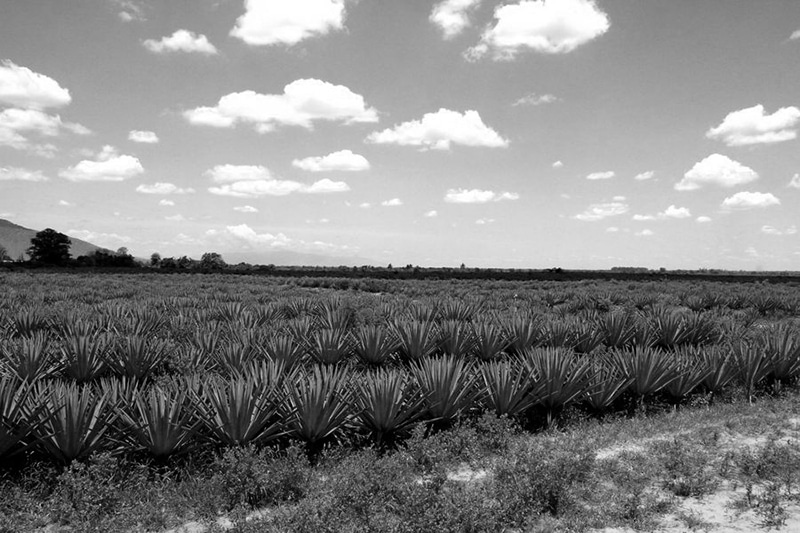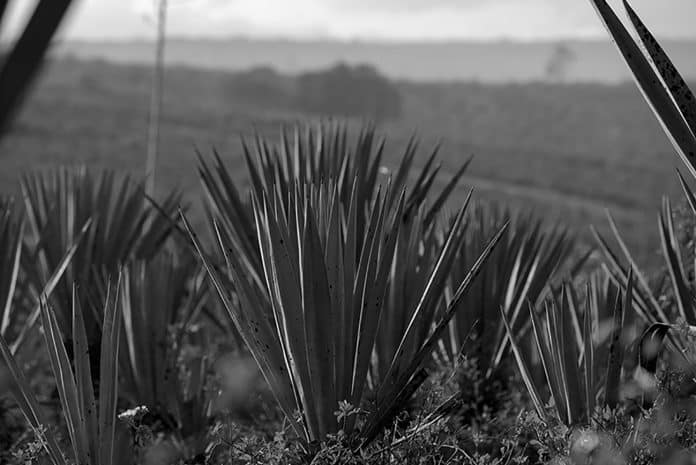Exploring the Fluctuating Sisal Price Per Ton in Tanzania: Factors Influencing the Market
In the vast landscapes of Tanzania, a small but mighty plant called sisal has been a cornerstone of the agricultural industry for decades. With its durable fibers and versatile applications, sisal has become a valuable commodity worldwide. However, the sisal market is far from stable, experiencing constant fluctuations in price per ton. What are the factors that influence these fluctuations? In this article, we delve into the intricate web of variables that impact the sisal price per ton in Tanzania. From weather patterns and harvest yields to global demand and economic policies, we uncover the complex dynamics that contribute to the ever-changing sisal price per ton. Whether you are an investor, a farmer, or simply curious about the agricultural industry, join us as we explore the fascinating world of sisal and uncover the secrets behind its fluctuating market prices in Tanzania.
Factors Influencing the Fluctuating Sisal Price

Sisal, a fibrous plant native to Mexico but now cultivated in various regions across the globe, is primarily grown for its strong and durable fibers. These fibers are used in a wide range of applications, including ropes, twines, carpets, and even paper products. The price of sisal per ton can vary significantly due to several factors.
One of the primary factors influencing the sisal price per ton in Tanzania is supply and demand. When the demand for sisal products is high, the price tends to rise, as suppliers can command higher prices for their goods. Conversely, when the demand is low, the price may decrease as suppliers try to attract buyers. This dynamic relationship between supply and demand is a fundamental principle of economics and applies to the sisal market as well.
Another factor that affects sisal prices is the quality of the harvested fibers. The quality of sisal fibers is determined by factors such as fiber length, strength, and color. Longer and stronger fibers are typically more desirable and command higher prices in the market. Consequently, variations in the quality of sisal fibers can lead to fluctuations in the price per ton.
Additionally, market competition plays a significant role in determining sisal price per ton in Tanzania. If there are many sisal producers in a particular region or country, the increased competition can drive prices down as suppliers compete for a share of the market. On the other hand, if there are few producers, they may have more control over pricing, leading to potentially higher prices.
Economic Factors Affecting the Sisal Market
The sisal market is not immune to the broader economic forces that shape industries and markets. Several economic factors can impact the price of sisal per ton in Tanzania.
One such factor that impacts sisal price per ton in Tanzania is inflation. When inflation rates are high, the purchasing power of consumers decreases, resulting in a decline in demand for sisal products. This decrease in demand can lead to lower prices as suppliers try to stimulate demand by reducing their prices. Conversely, during periods of low inflation, the demand for sisal products may increase, leading to higher prices.
Currency exchange rates also play a crucial role in the fluctuation of sisal prices. Sisal is often traded internationally, and changes in exchange rates can have a significant impact on the price per ton. If the local currency depreciates against major currencies, the price of sisal in international markets may decrease, making it more competitive. Conversely, if the local currency strengthens, the price of sisal may rise in international markets.
Furthermore, global economic conditions can influence sisal prices. During economic downturns, demand for sisal products may decline as consumers cut back on expenses. This decrease in demand can result in lower prices. Conversely, during periods of economic growth, the demand for sisal products may increase, leading to higher sisal price per ton in Tanzania.
Environmental Factors Impacting Sisal Production
The success of sisal production is highly dependent on favorable environmental conditions. Several environmental factors can impact sisal production and, consequently, the price per ton.
One such factor is rainfall. Sisal is a drought-resistant plant that thrives in semi-arid regions. Adequate rainfall is necessary for healthy sisal growth and optimal fiber yield. Insufficient rainfall can lead to reduced crop yields, which can, in turn, impact the sisal price per ton in Tanzania. Droughts or other adverse weather conditions can decrease the overall supply of sisal, leading to higher prices in the market.
Temperature is another crucial environmental factor that affects sisal production. Sisal plants prefer warm temperatures between 20 to 30 degrees Celsius. Extreme temperatures, such as prolonged periods of heatwaves or freezing conditions, can negatively impact sisal growth and fiber quality. Consequently, these adverse temperature conditions can affect the overall supply of sisal and contribute to fluctuations in price.
Pests and diseases also pose a significant threat to sisal production. Sisal plants are susceptible to various pests and diseases, such as mealybugs, nematodes, and fungal infections. Infestations or outbreaks can lead to reduced crop yields and poor fiber quality, ultimately affecting the sisal price per ton in Tanzania. Effective pest and disease management practices are crucial to maintaining healthy sisal crops and stable prices.
Government Policies and Regulations Affecting the Sisal Industry
Government policies and regulations can have a profound impact on the sisal industry in Tanzania. These policies can directly or indirectly influence the price of sisal per ton.
One key aspect is agricultural subsidies. Governments may provide financial incentives or subsidies to encourage sisal production. These subsidies can lower production costs for farmers, which may lead to increased supply and potentially lower prices. Conversely, the reduction or removal of subsidies can impact the profitability of sisal farming, potentially affecting the overall supply and sisal price per ton in Tanzania.
Trade policies and tariffs can also influence the sisal market. Governments may impose tariffs or restrictions on the export or import of sisal products. These trade policies can affect the competitiveness of sisal in global markets and, consequently, impact the price per ton. Lower trade barriers may result in increased global demand and potentially higher prices, while higher trade barriers can have the opposite effect.
Furthermore, government regulations on land use and environmental practices can impact sisal production. Sisal farming requires vast tracts of land, and government regulations on land allocation or environmental conservation can affect the availability of suitable land for cultivation. Restrictions on land use can limit sisal production and potentially lead to higher sisal price per ton in Tanzania.
Global Market Trends and Their Influence on Sisal Prices

The sisal market in Tanzania is not isolated from global market trends. Several factors in the global market can influence the price of sisal per ton.
One such factor is the demand for sisal products in international markets. The global demand for sisal can fluctuate due to changing consumer preferences, emerging trends, or shifts in industrial applications. Increased demand can lead to a higher sisal price per ton in Tanzania, while decreased demand can result in lower prices. Sisal producers in Tanzania must closely monitor global market trends to anticipate shifts in demand and adjust their production accordingly.
Another factor that can influence sisal prices is the availability of alternative fibers. Sisal competes with other natural and synthetic fibers in various industries. If alternative fibers become more readily available or gain popularity, the demand for sisal may decrease, potentially leading to lower prices. Conversely, if sisal is perceived as a more sustainable or eco-friendly option compared to alternatives, it may experience increased demand and higher prices.
International trade agreements and partnerships can also impact the sisal price per ton in Tanzania. Changes in trade agreements or the establishment of new partnerships can open up new markets or create barriers for sisal exports. These changes can affect the overall demand and pricing of sisal in international markets.
Sisal Price Forecasting: Methods and Tools
Given the complex dynamics that influence sisal prices, forecasting future price trends can be challenging. However, several methods and tools can assist in predicting sisal price fluctuations.
One commonly used approach is statistical analysis. Historical data on sisal prices, combined with relevant economic indicators and market trends, can be analyzed using statistical models. These models can identify patterns, correlations, and potential future price movements. Statistical analysis can provide valuable insights for market participants, allowing them to make informed decisions based on anticipated changes in the sisal price per ton in Tanzania.
Another approach is the use of market intelligence and expert opinions. Consulting industry experts, market analysts, and trade associations can provide valuable insights into the factors influencing sisal prices. These experts closely monitor market trends, global demand, and supply conditions, and their insights can be invaluable in predicting future price fluctuations.
Furthermore, advanced technologies such as machine learning and artificial intelligence (AI) can be utilized to forecast sisal price per ton in Tanzania. These technologies can analyze vast amounts of data and identify complex patterns and correlations that may not be apparent through traditional analysis methods. By leveraging AI-powered algorithms, market participants can gain a competitive edge in predicting and responding to sisal price changes.
Strategies for Managing Price Fluctuations in the Sisal Industry
Price fluctuations in the sisal industry can pose challenges for market participants, including farmers, producers, and investors. However, there are strategies that can help manage these fluctuations and mitigate their impact.
One strategy is diversification. Sisal farmers or producers can diversify their product offerings to include value-added sisal products, such as sisal carpets, handicrafts, or even biofuel. By diversifying their product range, market participants can reduce their reliance on the sisal price per ton in Tanzania and potentially offset any negative impacts of price fluctuations.
Another strategy is to establish long-term contracts or partnerships. By securing long-term agreements with buyers or suppliers, market participants can gain stability and predictability in pricing. These contracts can provide a certain level of price protection, ensuring a steady income stream even during periods of price volatility.
Furthermore, risk management tools, such as futures contracts or hedging strategies, can be utilized to manage price risk. These financial instruments enable market participants to lock in prices for future delivery, providing protection against adverse price movements. By actively managing price risk, market participants can mitigate the impact of price fluctuations on sisal price per ton in Tanzania and ensure more stable revenues.
Conclusion: The Future of the Sisal Market in Tanzania
The sisal market in Tanzania is influenced by a myriad of factors, ranging from economic conditions and environmental factors to government policies and global market trends. These variables contribute to the fluctuating price of sisal per ton, posing challenges and opportunities for market participants.
As the demand for sustainable and eco-friendly products continues to rise, the future of the sisal market in Tanzania holds promise. By closely monitoring market trends, diversifying product offerings, and adopting innovative technologies, market participants can navigate the challenges of price fluctuations on sisal price per ton in Tanzania and capitalize on the growing demand for sisal products.
In conclusion, the sisal market in Tanzania is a dynamic and intricate ecosystem influenced by numerous factors. Understanding these factors and their impact on sisal prices is crucial for anyone involved in the sisal industry. By staying informed and proactive, market participants can navigate the fluctuations and uncertainties of the sisal market, ensuring a sustainable and profitable future for this valuable agricultural commodity.
For more related articles on Manufacturing and Business in Tanzania (Trade) click here!





























